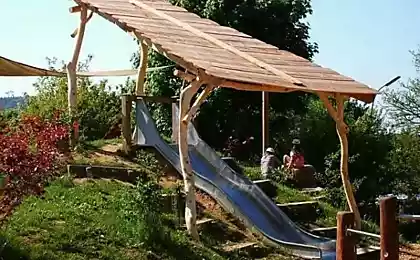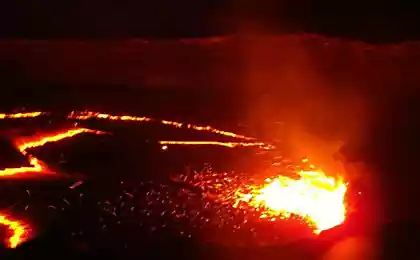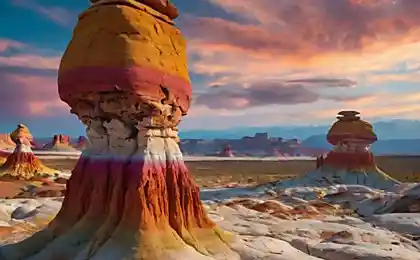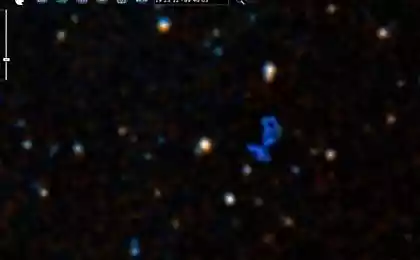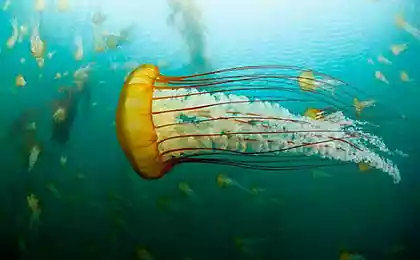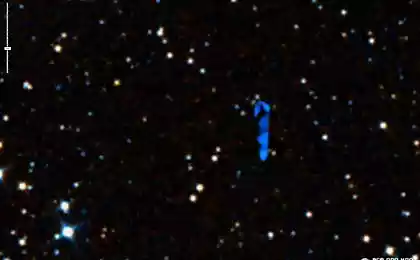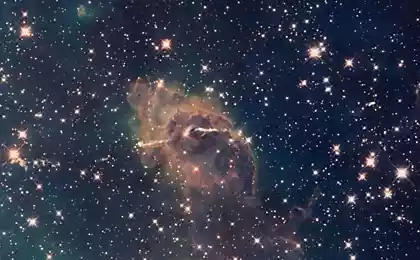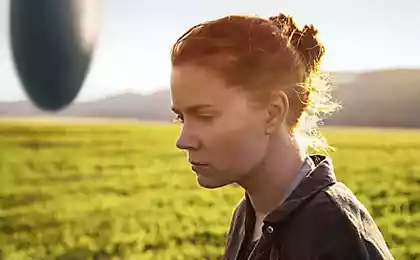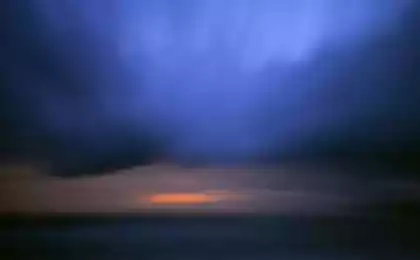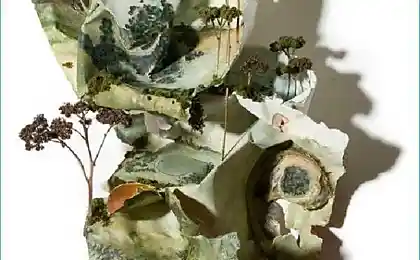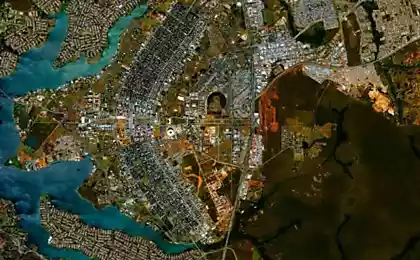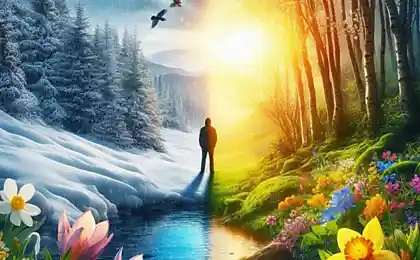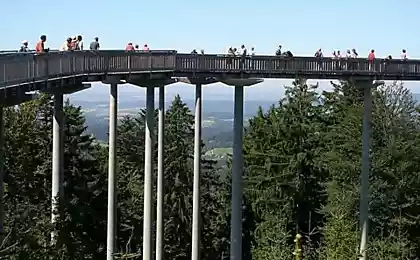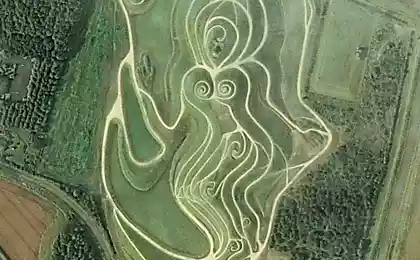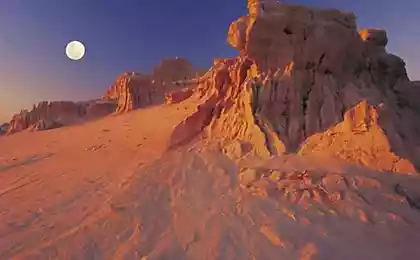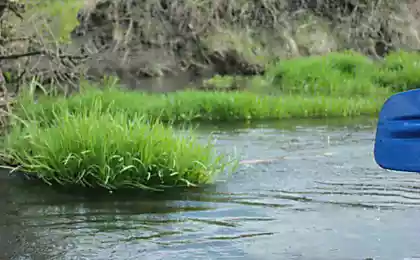1714
Alien landscapes
Very nice place ...
Archipelago of Socotra, Yemen
About six million years ago from Africa broke a small piece of land, which moved in the direction of the Arabian Peninsula. Collapsed on the way to the four islands piece managed to escape for a couple of hundred kilometers from its parent. But it had gone to the six million years was enough for the appearance here of the unique ecosystem of more than a third of the species of plants, 90% of reptiles and almost all kinds of shellfish are found nowhere else in the world. Here, of course, no Octopodiformes pyatiglazov communicating in the language of clicks. But there is a dragon tree, like a mushroom cloud from which besides each year flows "blood" Dendrosicyos - shapeless smooth white trunk, on top of which is a fun green "cucumbers" or sokotranskaya desert rose - the same tree, and the type of both funny and repulsive.
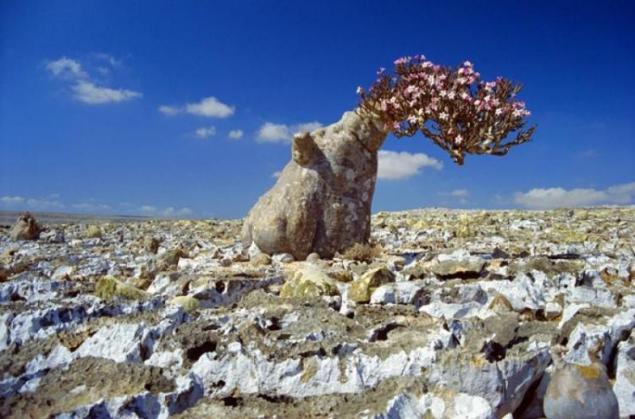
Despite its isolation, the archipelago, as recently revealed, was populated by one and a half million years ago. In 2008, a Russian archaeologist Valery Zhukov found here Oldowan stone tools (2, 7-1 million years ago). Sensational discovery is that it is not clear how to get here representative of this era - homo habilis, «Homo habilis." But modern man to visit Socotra is not difficult - even on the plane, though the sea. Better to go in February and March: the rest of the time, especially from May to September, on Socotra quite harsh and unpleasant weather with endless rains and winds knocked down.
Mount Roraima, Venezuela
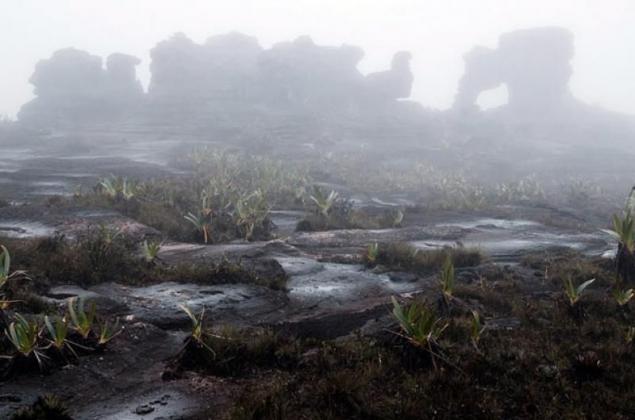
In 1839, an expedition of the German traveler and explorer Robert Schomburgk on British Guiana literally hit the wall, taking care of the cloud. It was a mountain, but the mountain unusual - if someone has a huge knife cut it off the top, leaving a giant flat platform. Report Shomburgk about traveling caught the eye of Sir Arthur Conan Doyle, whose imagination immediately placed on a plateau miraculously preserved from prehistoric times "Lost World».
In fact, what is happening on the top of Mount Roraima - one of the tepuis, mesas South American, the rest of the vast plateau of sandstone, which existed when South America and Africa were one continent - more like a representation of science fiction writers of the 1950s about Venus: the eternal rain watering quite unearthly landscape. "Tepui" in the language of the local Indians means "home of the gods." But this house is pretty bleak: the rains wash away nutrients from the soil, leaving no chance of familiar life. And those of flora and fauna which still took root here, quite unique. Not by chance the creators of the cartoon "Up" (also on the journey to a lost world) in search of inspiration went to Roraima. And director Pete Docter then admitted that what he saw they used only in general terms: "It is so far from reality that the audience just would not believe».
Salar de Uyuni, Bolivia
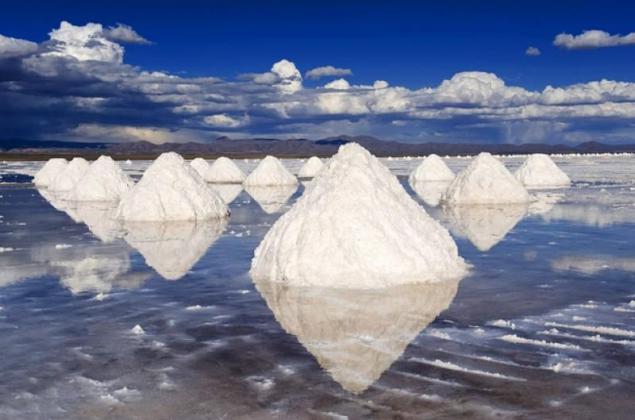
Some call it the "boundary of heaven and earth," but this expression is not entirely true. Rather, it is a place where the sky and the top and bottom, and you can walk on it: it is the large mirror on the earth, so great that goes beyond the horizon.
Salar de Uyuni - the biggest in the world. In the depths of the dried salt lake stored reserves of natural substances and minerals for many thousands of years. Such a specific composition and environmental conditions have turned this place into a unique point on the planet. Firstly, elevation in an area of more than ten thousand square kilometers does not exceed one meter. Secondly, in the dry season is the brightest white plain, and when rain falls - impeccably detailed reflection of the sky. The depth of the lake in most places does not exceed a few centimeters, so that it can freely roam, watching the clouds underfoot. In addition, every November hordes of flamingos arrive here rare species and colorings. But wishing to visit the Salar de Uyuni is worth considering that it is located at a height of three and a half thousand meters above sea level, so I have some time to acclimate.
Gallery "Wave", the US
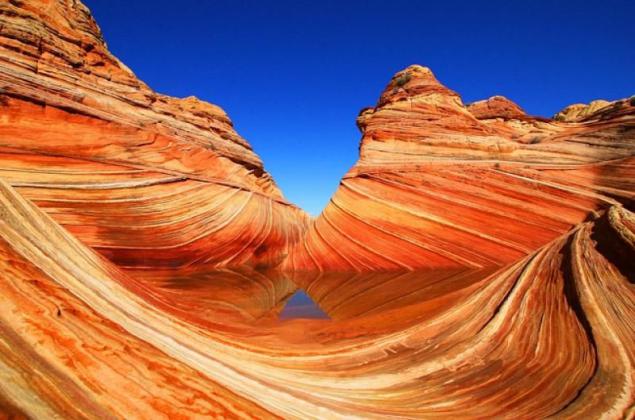
Striking formation of sand and stones called "Wave" is located on the border of the US states of Utah and Arizona. Two hundred million years, the mighty wind grind out these wavelike formation with an unexpected and pleasant eye geometry. Once it had been sand dunes, under the pressure of time and environmental conditions turned into colored ribbed hills; now it is one of the main lures for landscape photographers from around the world. Interest in Arizona gallery sandstone is so high that the local authorities are forced to limit the flow of wanting to at least half an eye to look at this miracle of nature. Therefore, in the day issued only twenty tickets. Ten of them played the lottery yet four months before the intended visit, and the other ten - the day before the trip. And if in low season chances to win approval for two or three days, the high - from March to November - the probability falls below 50%. But if you get permission from Arizona does not work, can be as comforting to look at similar formations in Utah: they are not as popular as the "Wave", and less impressive, but more accessible.
Dry Valleys, Antarctica
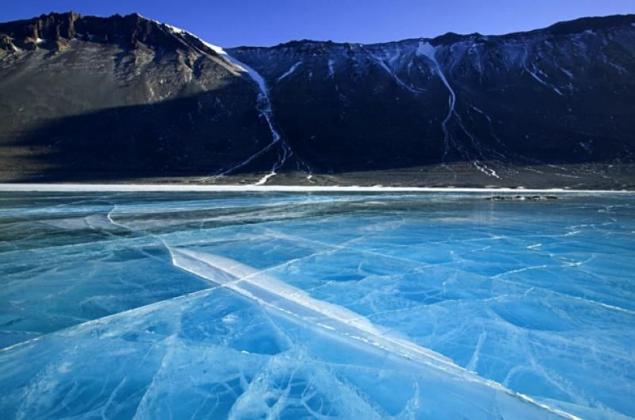
The driest place on Earth - this is not the Sahara or the Gobi, as might be expected, and a place in Antarctica with the speaker called the Dry Valleys: somewhere in them there was no water for two million years! This piece of land surrounded by mountains, from which under the influence of gravity with great speed (300 km / h) down cold dense air, taking with them everything that comes along the way, including water, snow and ice. If we compare these conditions with what is happening on the planets of the solar system, the closest they will be to Mars. What was the joy of scientists, when even in such a harsh environment was found life - bacteria, which is sufficient for the existence of those droplets of moisture that manage to take shelter from the wind in the uneven surfaces of rocks.
Even more interesting is another bacterium, a neighbor who lives beneath the glacier Taylor, who is also geographically belongs to the dry valleys. This anaerobic bacterium converts sulfur and iron, and the result is the ability to live with the water flows to the surface - the so-formed Blood Falls. Painted iron oxide water on a white background glacier looks scary, as if from a great non-healing wound gushing blood.
River Tinto, Spain
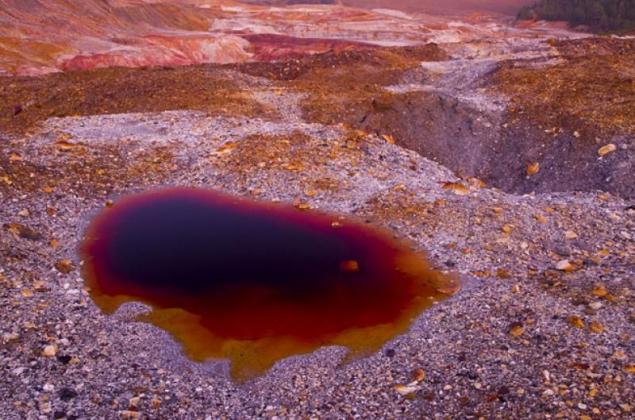
The ancient peoples of the Iberians and tartessiytsev began mining in the Sierra Morena - where the river originates Tinto. Iron, copper, silver, gold, manganese - which just is not mined for five thousand years! All this will inevitably fall into the slowly flowing waters of the local rivers and spread through the neighborhood. It would seem that nothing living except the people in overalls and helmets, there can not be. But nature had its own way and settled here relatives extremophile bacteria from Blood Falls in Antarctica. They are happy to become poisonous to process any normal body substances. As a result Tinto and its surroundings were painted in all shades of red and yellow, and scientists have another hope for the existence of life beyond Earth.
Local conditions are similar to the Martian and what is happening under the ice shell of Europe, a satellite of Jupiter. The most beautiful thing that it can safely see with your eyes, though industrial development going on here today, most of the sites are free to visit the river.
Lake Spotted Lake, Canada
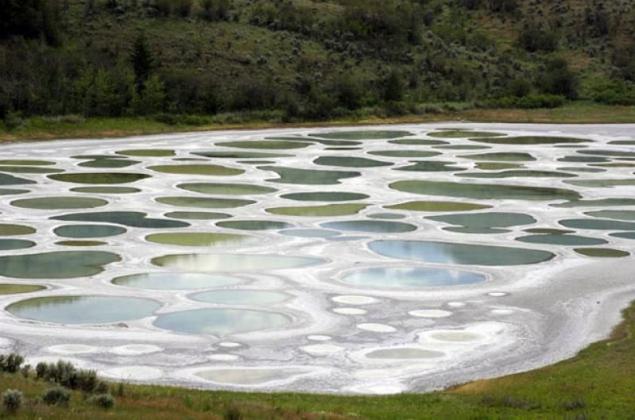
Spotted Lake Spotted Lake - one of the strangest places in the world - like no one known planets. Because of the high salt concentration (the highest among the world lakes) and the special climate Spotted Lake in the hot season is a gathering of small Ozerets between which you can walk. It sounds pretty boring - but looks unforgettable.
Thanks salts local waters have healing properties, and this feature at the time was the cause of fierce opposition of local Indians and colonists Europeans. Aboriginal Spotted Lake - a sacred place, it involves a lot of legends and stories, is an integral part of the local culture. And when, in 1979, Ernest Smith, de jure owner of these lands, decided to make a health resort here, it caused an uproar among the indigenous population. Indians fought for the right to preserve the integrity of the protected land in more than twenty years, and only in the year 2001 bought it for 720 thousand. Dollars. Since then, access to the lake is limited, and visit it can only get permission from the elders. This, though not easy, but it is likely, as a last resort, you can enjoy views of the Spotted Lake close to the highway.
Moon Valley, Brazil
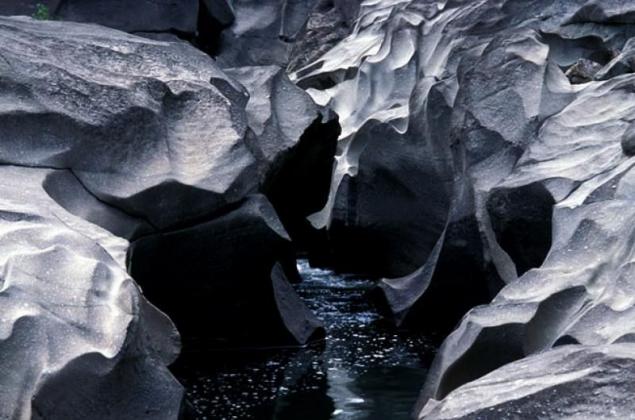
Moon Valley is located within the National Park Chapada dos Veadeiros National Park in Brazil. The plateau on which stands the park, was formed about 1, 8 billion years ago. Local rocks - the oldest in the world: they are just something in a little over two times under the moon. For thousands of years the water of the river San Miguel grind natural quartz, which consists of the local rock, to the most bizarre and unnatural forms. Valley neighborhood, too, will be remembered for a long time: in addition to the fossilized remains of ancient plants and animals here in abundance of thriving descendants: orchids, palms, pepper trees, anteaters, tapirs, capybaras, rheas and others. In 2001, the National Park Chapada dos Veadeiros National Park was listed as a UNESCO World Heritage Site. And the only thing that can be confusing in this decision - why it was made only after forty years after the discovery of the valley.
Qingrui du Bemarha, Madagascar
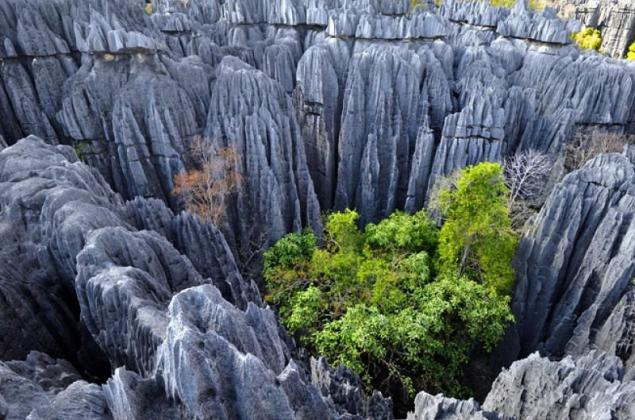
Unpronounceable name of the reserve comes from the more easy words mitsingitsignia, that in Malagasy means "to walk on tiptoe." Indeed, when looking at the local landscape thought about any other form of transportation did not even come to mind.
The famous Stone Forest was formed by erosion of calcareous rocks: instead of the usual mountains shoots up here palisade sharp rock peaks. Among them punched rare (in both senses of the word) trees, worn the same rare animals - lemurs - and flashed at least rare birds. Below, at the foot, not too bored: there forested canyons, mysterious caves and dark waters of the river Manambolo.
The reserve is organized in 1927 in order to preserve natural conditions, and still some parts are closed to the public. But also those that are available, you still seem to imported here from somewhere outside the Earth.
Volcano Dallol, Ethiopia
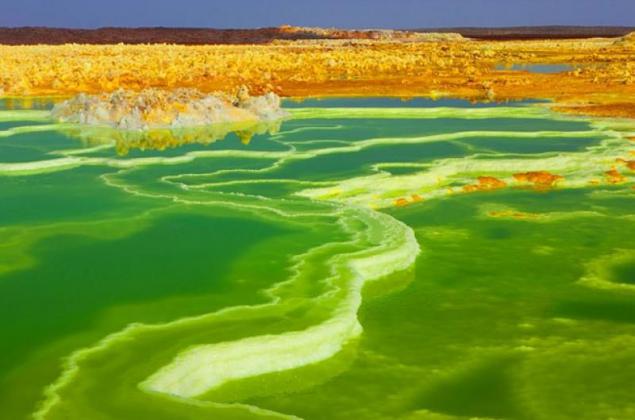
The crater of this volcano plausible demonstrates what happens on Io, Jupiter's moon: a plurality of bubbling geysers, fantastic color and persistent smell of sulfur. Below all other volcanoes in the world - minus 48 meters above sea level - Dallol is still active, so the surrounding area constantly bubbling and seething. But the last major eruption was in 1926 - it was then formed and "extraterrestrial" lake, which is a fancy salt formation framed pools of green and purple liquid.
Dallol crater - the hottest place on Earth: the annual average temperature here is 34 degrees Celsius. In this heat and a corrosive environment can not exist no form of life than bacteria. That they provide bright colored memories each visitor of this inhospitable place.
Reach Dallol is not so simple - despite the apparent abundance of natural resources, roads there are not paved. This place is regularly visit a camel caravans on the backs of which were exported salt mined here.
Source
Archipelago of Socotra, Yemen
About six million years ago from Africa broke a small piece of land, which moved in the direction of the Arabian Peninsula. Collapsed on the way to the four islands piece managed to escape for a couple of hundred kilometers from its parent. But it had gone to the six million years was enough for the appearance here of the unique ecosystem of more than a third of the species of plants, 90% of reptiles and almost all kinds of shellfish are found nowhere else in the world. Here, of course, no Octopodiformes pyatiglazov communicating in the language of clicks. But there is a dragon tree, like a mushroom cloud from which besides each year flows "blood" Dendrosicyos - shapeless smooth white trunk, on top of which is a fun green "cucumbers" or sokotranskaya desert rose - the same tree, and the type of both funny and repulsive.

Despite its isolation, the archipelago, as recently revealed, was populated by one and a half million years ago. In 2008, a Russian archaeologist Valery Zhukov found here Oldowan stone tools (2, 7-1 million years ago). Sensational discovery is that it is not clear how to get here representative of this era - homo habilis, «Homo habilis." But modern man to visit Socotra is not difficult - even on the plane, though the sea. Better to go in February and March: the rest of the time, especially from May to September, on Socotra quite harsh and unpleasant weather with endless rains and winds knocked down.
Mount Roraima, Venezuela

In 1839, an expedition of the German traveler and explorer Robert Schomburgk on British Guiana literally hit the wall, taking care of the cloud. It was a mountain, but the mountain unusual - if someone has a huge knife cut it off the top, leaving a giant flat platform. Report Shomburgk about traveling caught the eye of Sir Arthur Conan Doyle, whose imagination immediately placed on a plateau miraculously preserved from prehistoric times "Lost World».
In fact, what is happening on the top of Mount Roraima - one of the tepuis, mesas South American, the rest of the vast plateau of sandstone, which existed when South America and Africa were one continent - more like a representation of science fiction writers of the 1950s about Venus: the eternal rain watering quite unearthly landscape. "Tepui" in the language of the local Indians means "home of the gods." But this house is pretty bleak: the rains wash away nutrients from the soil, leaving no chance of familiar life. And those of flora and fauna which still took root here, quite unique. Not by chance the creators of the cartoon "Up" (also on the journey to a lost world) in search of inspiration went to Roraima. And director Pete Docter then admitted that what he saw they used only in general terms: "It is so far from reality that the audience just would not believe».
Salar de Uyuni, Bolivia

Some call it the "boundary of heaven and earth," but this expression is not entirely true. Rather, it is a place where the sky and the top and bottom, and you can walk on it: it is the large mirror on the earth, so great that goes beyond the horizon.
Salar de Uyuni - the biggest in the world. In the depths of the dried salt lake stored reserves of natural substances and minerals for many thousands of years. Such a specific composition and environmental conditions have turned this place into a unique point on the planet. Firstly, elevation in an area of more than ten thousand square kilometers does not exceed one meter. Secondly, in the dry season is the brightest white plain, and when rain falls - impeccably detailed reflection of the sky. The depth of the lake in most places does not exceed a few centimeters, so that it can freely roam, watching the clouds underfoot. In addition, every November hordes of flamingos arrive here rare species and colorings. But wishing to visit the Salar de Uyuni is worth considering that it is located at a height of three and a half thousand meters above sea level, so I have some time to acclimate.
Gallery "Wave", the US

Striking formation of sand and stones called "Wave" is located on the border of the US states of Utah and Arizona. Two hundred million years, the mighty wind grind out these wavelike formation with an unexpected and pleasant eye geometry. Once it had been sand dunes, under the pressure of time and environmental conditions turned into colored ribbed hills; now it is one of the main lures for landscape photographers from around the world. Interest in Arizona gallery sandstone is so high that the local authorities are forced to limit the flow of wanting to at least half an eye to look at this miracle of nature. Therefore, in the day issued only twenty tickets. Ten of them played the lottery yet four months before the intended visit, and the other ten - the day before the trip. And if in low season chances to win approval for two or three days, the high - from March to November - the probability falls below 50%. But if you get permission from Arizona does not work, can be as comforting to look at similar formations in Utah: they are not as popular as the "Wave", and less impressive, but more accessible.
Dry Valleys, Antarctica

The driest place on Earth - this is not the Sahara or the Gobi, as might be expected, and a place in Antarctica with the speaker called the Dry Valleys: somewhere in them there was no water for two million years! This piece of land surrounded by mountains, from which under the influence of gravity with great speed (300 km / h) down cold dense air, taking with them everything that comes along the way, including water, snow and ice. If we compare these conditions with what is happening on the planets of the solar system, the closest they will be to Mars. What was the joy of scientists, when even in such a harsh environment was found life - bacteria, which is sufficient for the existence of those droplets of moisture that manage to take shelter from the wind in the uneven surfaces of rocks.
Even more interesting is another bacterium, a neighbor who lives beneath the glacier Taylor, who is also geographically belongs to the dry valleys. This anaerobic bacterium converts sulfur and iron, and the result is the ability to live with the water flows to the surface - the so-formed Blood Falls. Painted iron oxide water on a white background glacier looks scary, as if from a great non-healing wound gushing blood.
River Tinto, Spain

The ancient peoples of the Iberians and tartessiytsev began mining in the Sierra Morena - where the river originates Tinto. Iron, copper, silver, gold, manganese - which just is not mined for five thousand years! All this will inevitably fall into the slowly flowing waters of the local rivers and spread through the neighborhood. It would seem that nothing living except the people in overalls and helmets, there can not be. But nature had its own way and settled here relatives extremophile bacteria from Blood Falls in Antarctica. They are happy to become poisonous to process any normal body substances. As a result Tinto and its surroundings were painted in all shades of red and yellow, and scientists have another hope for the existence of life beyond Earth.
Local conditions are similar to the Martian and what is happening under the ice shell of Europe, a satellite of Jupiter. The most beautiful thing that it can safely see with your eyes, though industrial development going on here today, most of the sites are free to visit the river.
Lake Spotted Lake, Canada

Spotted Lake Spotted Lake - one of the strangest places in the world - like no one known planets. Because of the high salt concentration (the highest among the world lakes) and the special climate Spotted Lake in the hot season is a gathering of small Ozerets between which you can walk. It sounds pretty boring - but looks unforgettable.
Thanks salts local waters have healing properties, and this feature at the time was the cause of fierce opposition of local Indians and colonists Europeans. Aboriginal Spotted Lake - a sacred place, it involves a lot of legends and stories, is an integral part of the local culture. And when, in 1979, Ernest Smith, de jure owner of these lands, decided to make a health resort here, it caused an uproar among the indigenous population. Indians fought for the right to preserve the integrity of the protected land in more than twenty years, and only in the year 2001 bought it for 720 thousand. Dollars. Since then, access to the lake is limited, and visit it can only get permission from the elders. This, though not easy, but it is likely, as a last resort, you can enjoy views of the Spotted Lake close to the highway.
Moon Valley, Brazil

Moon Valley is located within the National Park Chapada dos Veadeiros National Park in Brazil. The plateau on which stands the park, was formed about 1, 8 billion years ago. Local rocks - the oldest in the world: they are just something in a little over two times under the moon. For thousands of years the water of the river San Miguel grind natural quartz, which consists of the local rock, to the most bizarre and unnatural forms. Valley neighborhood, too, will be remembered for a long time: in addition to the fossilized remains of ancient plants and animals here in abundance of thriving descendants: orchids, palms, pepper trees, anteaters, tapirs, capybaras, rheas and others. In 2001, the National Park Chapada dos Veadeiros National Park was listed as a UNESCO World Heritage Site. And the only thing that can be confusing in this decision - why it was made only after forty years after the discovery of the valley.
Qingrui du Bemarha, Madagascar

Unpronounceable name of the reserve comes from the more easy words mitsingitsignia, that in Malagasy means "to walk on tiptoe." Indeed, when looking at the local landscape thought about any other form of transportation did not even come to mind.
The famous Stone Forest was formed by erosion of calcareous rocks: instead of the usual mountains shoots up here palisade sharp rock peaks. Among them punched rare (in both senses of the word) trees, worn the same rare animals - lemurs - and flashed at least rare birds. Below, at the foot, not too bored: there forested canyons, mysterious caves and dark waters of the river Manambolo.
The reserve is organized in 1927 in order to preserve natural conditions, and still some parts are closed to the public. But also those that are available, you still seem to imported here from somewhere outside the Earth.
Volcano Dallol, Ethiopia

The crater of this volcano plausible demonstrates what happens on Io, Jupiter's moon: a plurality of bubbling geysers, fantastic color and persistent smell of sulfur. Below all other volcanoes in the world - minus 48 meters above sea level - Dallol is still active, so the surrounding area constantly bubbling and seething. But the last major eruption was in 1926 - it was then formed and "extraterrestrial" lake, which is a fancy salt formation framed pools of green and purple liquid.
Dallol crater - the hottest place on Earth: the annual average temperature here is 34 degrees Celsius. In this heat and a corrosive environment can not exist no form of life than bacteria. That they provide bright colored memories each visitor of this inhospitable place.
Reach Dallol is not so simple - despite the apparent abundance of natural resources, roads there are not paved. This place is regularly visit a camel caravans on the backs of which were exported salt mined here.
Source
